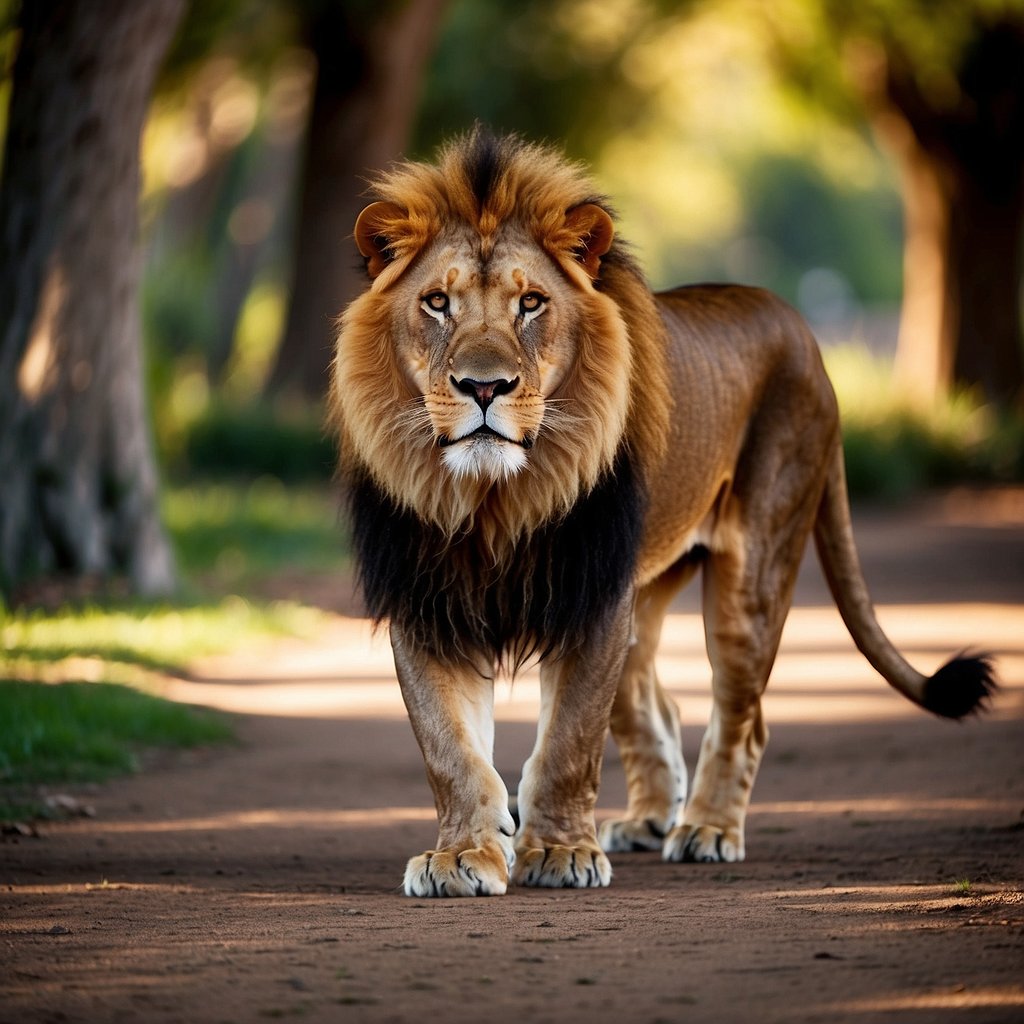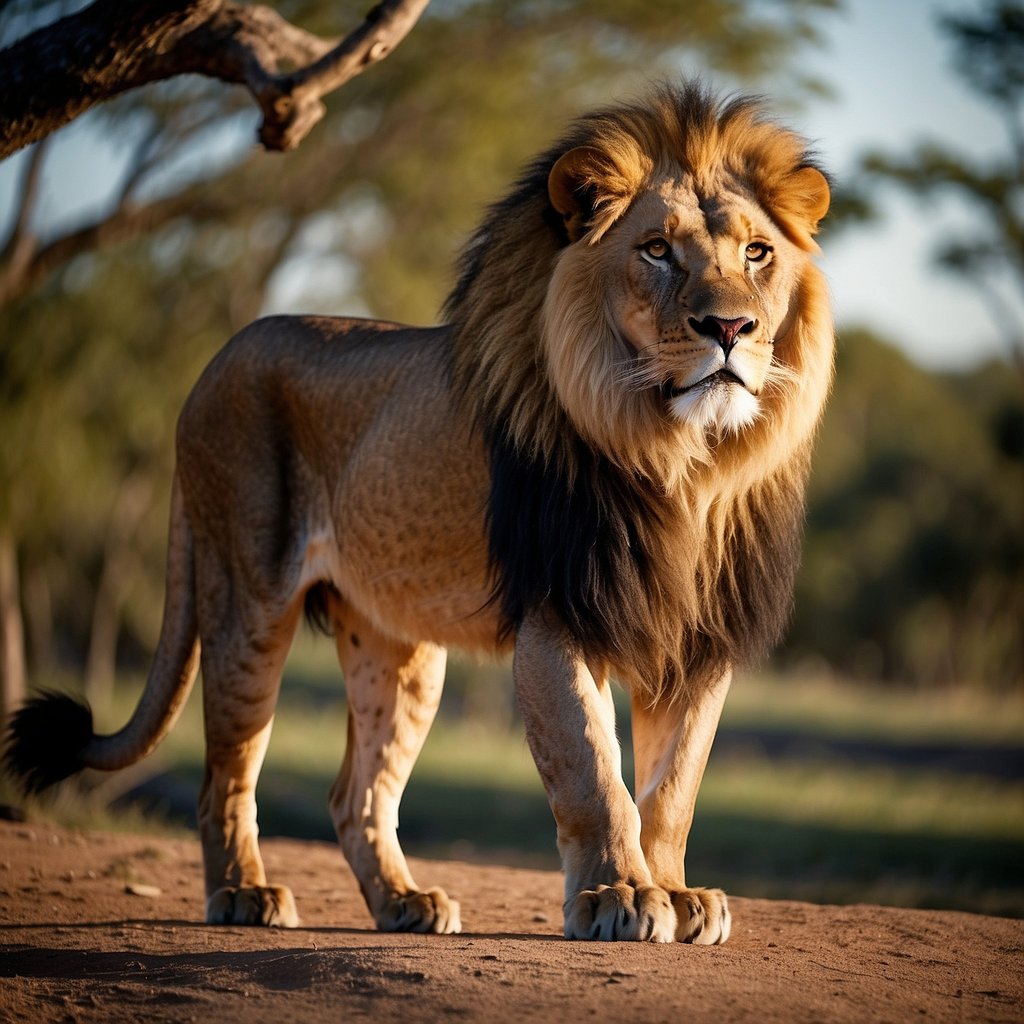
African Lion Anatomy
The African lion (Panthera leo) stands as a majestic symbol of strength and courage. Renowned for its power and hunting prowess, the African lion’s anatomy is a key element to its survival in the wild. Its muscular build, which includes particularly strong front legs, enables it to overpower prey and maintain its status as an apex predator. The distinctive thoracic structure of the lion, shaped by these muscular limbs, contributes profoundly to its respiratory efficiency—an anatomical adaptation crucial for enduring the high-speed chases during hunting.
Further insights into the lion’s anatomy reveal a complex skeletal system supporting their heavy frame and providing leverage for their powerful movements. Radiological studies of the bones, both in the forelimbs and hind limbs, present detailed information about the lion’s structural makeup. Understanding the anatomy of the skull and mandible also provides invaluable data, not just for academic study, but also for wildlife conservation and medical treatment in captive and wild populations.
Key Takeaways
- The African lion’s anatomy is specialized for strength and endurance, with powerful front legs and a robust skeletal structure.
- Anatomical studies, including osteological and radiographic analyses, offer detailed insights into the lion’s skeletal system.
- Knowledge of lion anatomy aids in conservation efforts and medical care for these apex predators.

Taxonomy and Evolution
The African Lion, scientifically termed Panthera leo, is a member of the Felidae family, which encompasses other big cats such as tigers, leopards, and jaguars. This majestic feline’s ancestry traces back to the late Pliocene epoch, indicating a long-standing evolution over millions of years.
Taxonomic Classification:
- Kingdom: Animalia
- Phylum: Chordata
- Class: Mammalia
- Order: Carnivora
- Family: Felidae
- Genus: Panthera
- Species: P. leo
Within the species, several subspecies of lions have been identified, although their classification has been subject to extensive research and debate due to morphological similarities. These subspecies exhibit slight variations in mane appearance, size, and adaptations to their respective environments.
Lions belong to the genus Panthera, a hallmark of which includes the ability to roar, a trait shared with other members such as the tiger (Panthera tigris), indicating a shared evolutionary pathway. The genus itself has seen extensive adaptative radiation, leading to the variety seen within the group today.
The evolution of the African Lion has been deeply influenced by its habitat and the availability of prey. As apex predators, lions have evolved both behaviorally and anatomically to suit their roles in the varying ecosystems across the African continent. Their social structure, a unique characteristic among the big cats, has impacted their evolution, promoting traits advantageous for communal living and cooperative hunting.

african Lion anatomy: Physical Characteristics
The African lion is renowned for its majestic presence and imposing physique. Recognizable by its robust body, muscular build, and distinctive mane in males, its physical characteristics are a testament to its predatory prowess.
General Appearance
The African lion exhibits a sturdy and robust build, with males being larger and more muscular than females. They possess a well-defined head with a broad skull and strong jaws, embodying strength and agility.
Size and Weight
Males typically stand at about 1.2 meters (4 feet) tall at the shoulder and are about 2.5 to 3 meters (8.2 to 9.8 feet) long, excluding their tail. Female lions are generally smaller, with an overall length of roughly 2.3 meters (7.5 feet). Males can weigh between 150–250 kilograms (330–550 pounds), while females are lighter, ranging from 110–180 kilograms (240–400 pounds).
Coat and Color
Their coat is short and sleek with a color palette that varies from light buff to silvery gray, to yellowish-red and dark brown. The underparts are generally lighter, providing some camouflage in the African savannah.
Mane Development
The male lion’s mane is a unique feature, ranging in color from blonde to black. It starts to develop when they are about a year old and signifies maturity and rank. The darker and fuller the mane, the more intimidating the lion is to rivals or threats.
Tail Features
An African lion’s tail is equipped with a distinct hairy tuft at the end, which is not present at birth but develops around 5-7 months of age. The tail’s average length is about 60-100 centimeters (24-39 inches), serving as a balance tool for the lion and a means of communication among pride members.

african lion Physiology
The anatomy of the African lion is specialized to support its predatory lifestyle, characterized by a robust musculoskeletal system for strength, a powerful cardiovascular system for endurance, and specific adaptations that make it an apex predator.
Musculoskeletal System
The musculoskeletal system of the African lion is a testament to its strength. Bones like the humerus and femur are solid and stocky, offering a framework that supports the lion’s muscular build. Muscles are well-developed, especially in the limbs and jaws, providing significant power for hunting and fighting.
- Limb Muscles: Provide the necessary force for sprinting and pouncing on prey.
- Jaw Muscles: Enable a strong bite force critical for subduing prey.
Cardiovascular System
At the heart of the cardiovascular system is the lion’s Heart, larger and more powerful relative to size, compared to many other mammals. This powerful heart pumps blood effectively through the body, supporting sustained activity necessary for stalking and chasing prey.
- Blood vessels: Extensive and robust, ensuring efficient circulation.
- Heart Rate: Fluctuates to meet the oxygen demands of the body during rest and peak activity.
Adaptations for Hunting
The African lion’s anatomy has evolved distinct Adaptations for hunting that place them at the apex of the food chain.
- Muscular Strength: Key for overpowering prey of various sizes.
- Bone Structure: Provides leverage and support for the powerful muscle contraction during a hunt.
- Cardiovascular Efficiency: Sustains the lion through long periods of stalking and the intense burst of speed during the chase.
These physiological traits afford the African lion with unmatched hunting prowess in its natural habitat.

Frequently Asked Questions
The anatomy of the African lion is complex and has evolved to support its role as a top predator. This section addresses common inquiries regarding their anatomical traits and adaptations.
What are the key anatomical differences between male and female African lions?
Male African lions are distinguishable by their large manes, which females lack. Additionally, males generally exhibit greater overall size and mass compared to females.
How have the skeletal and muscular systems of African lions adapted to their predatory lifestyle?
The skeletal and muscular systems of African lions are optimized for strength and speed. Their muscular build allows for powerful bursts of speed, while strong-boned structures provide the necessary support for taking down large prey.
What specialized organs do African lions possess that aid in their survival?
African lions have a highly developed olfactory system for scent detection and a nictitating membrane to protect their eyes during hunts. Their sharp retractable claws and canine teeth are specialized for gripping and tearing flesh.
Can you explain the physiological traits that distinguish African lions from other big cats?
Physiologically, African lions have a distinct larynx that enables their characteristic roar. Compared to other big cats, their heart and lungs are suited to both stalking prey and short sprints.
What evolutionary history led to the current anatomy of the African lion?
The African lion’s anatomy is the result of millions of years of evolution, favoring traits that improve hunting capabilities and social dominance. They share a common ancestor with other big cats but have evolved unique adaptations for their environment.
How do the various body parts of an African lion function together during hunting and social behavior?
During hunting, an African lion’s body works in unison: powerful hind legs for sprinting, sharp claws and teeth for capturing prey, and strong jaws for the kill. Socially, their body language, vocalizations, and scent marking are essential for communication and maintaining group dynamics.